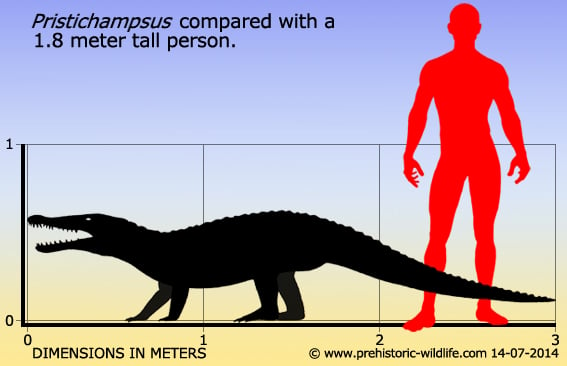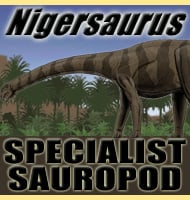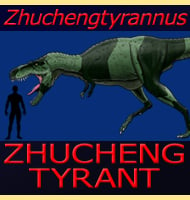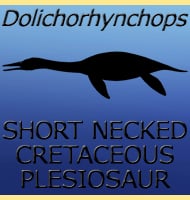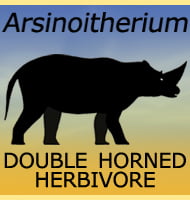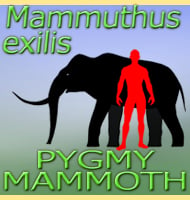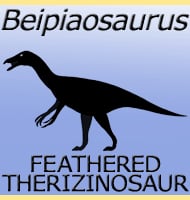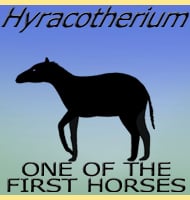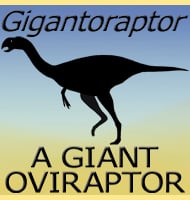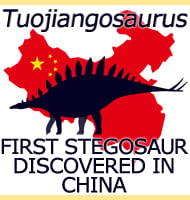In Depth
Pristichampsus is a crocodile that bears all of the hallmarks of a terrestrial lifestyle rather than an aquatic one like todays crocodiles. The key clues to this lifestyle can be seen in the legs which are longer than those of semi-aquatic crocodiles to allow for more terrestrial locomotion. Additionally the ends of the toes were hoof-like for better traction on the land. The tail of Pristichampsus is was also round rather than flattened, probably because it was not used for swimming like its semi-aquatic cousins. Although a bipedal posture is theoretically possible for a Pristichampsus running at high speed, palaeontologists are confident that for most of the time and in standard low speed locomotion, Pristichampsus would have been quadrupedal due to the centre of gravity being well forward of the hips.
Support for the idea of a terrestrial lifestyle comes from the teeth of Pristichampsus which were laterally compressed (broad when seen from the side, but thin when viewed from the front) and had well developed serrations. These kinds of teeth are perfect for slicing through flesh, particularly the relatively soft and unarmoured bodies of mammals. Aquatic crocodiles however have more conical teeth which are stronger and better able to grip a struggling animal as the crocodile holds it under the water to drown it. In addition Pristichampsus is often credited with having teeth like large theropod dinosaurs, particularly the tyrannosaurids, though really this is a poor analogy. Tyrannosaurids like Tyrannosaurus had round conical teeth for crunching bones, not slicing flesh like Pristichampsus. A better analogy would be that of the carcharodontosaurids, another group of theropods which did have serrated and laterally compressed teeth.
The temporal and geographical ranges as well as the number of individuals of Pristichampsus indicate that it was a very capable predator. The early Eocene is marked by abundant warm forests which would have provided plenty of ambush locations for a predator like Pristichampsus to use to surprise prey. The warm climate also helped with a reptilian cold blooded metabolism so that crocodiles like Pristichampsus could be more active.
As the Eocene progressed however things began to change in that global temperatures began to slowly drop which triggered a shift towards a cooler and drier climate. First, crocodiles are cold blooded, so those like Pristichampsus would have steadily become more lethargic, meaning slower reactions and movements. Second, the forests that held so many hiding places began to thin out and become replaced by grasslands, though not yet to the extent of later periods. Third, the animals that Pristichampsus preyed upon were also changing, developing longer legs to help cover the wider distances between growths, which also meant that they were becoming faster and harder to catch. Additionally the mammals were also proving to be more competition as more highly developed predators such as creodonts and nimravids began appearing. Although crocodiles would continue into modern times, they would do so by being more specialised hunters of aquatic environments while the terrestrial crocodiles like Pristichampsus would steadily decline.
Further Reading
– Studies on Cenozoic crocodiles: 5. Biomechanical investigation on the postcranial skeleton of the Palaeogene crocodile Pristichampsus rollinatii (Eusuchia: Pristichampsidae). – Neues Jahrbuch fuer Geologie und Pal�ontologie Abh. 217 (3) 289-300. – T. Russmann – 2000. – Phylogenetic relationships of Palaeogene ziphodont eusuchians and the status of Pristichampsus Gervais, 1853. – Earth and Environmental Science Transactions of the Royal Society of Edinburgh: 1. – C. A. Brochu – 2013.
